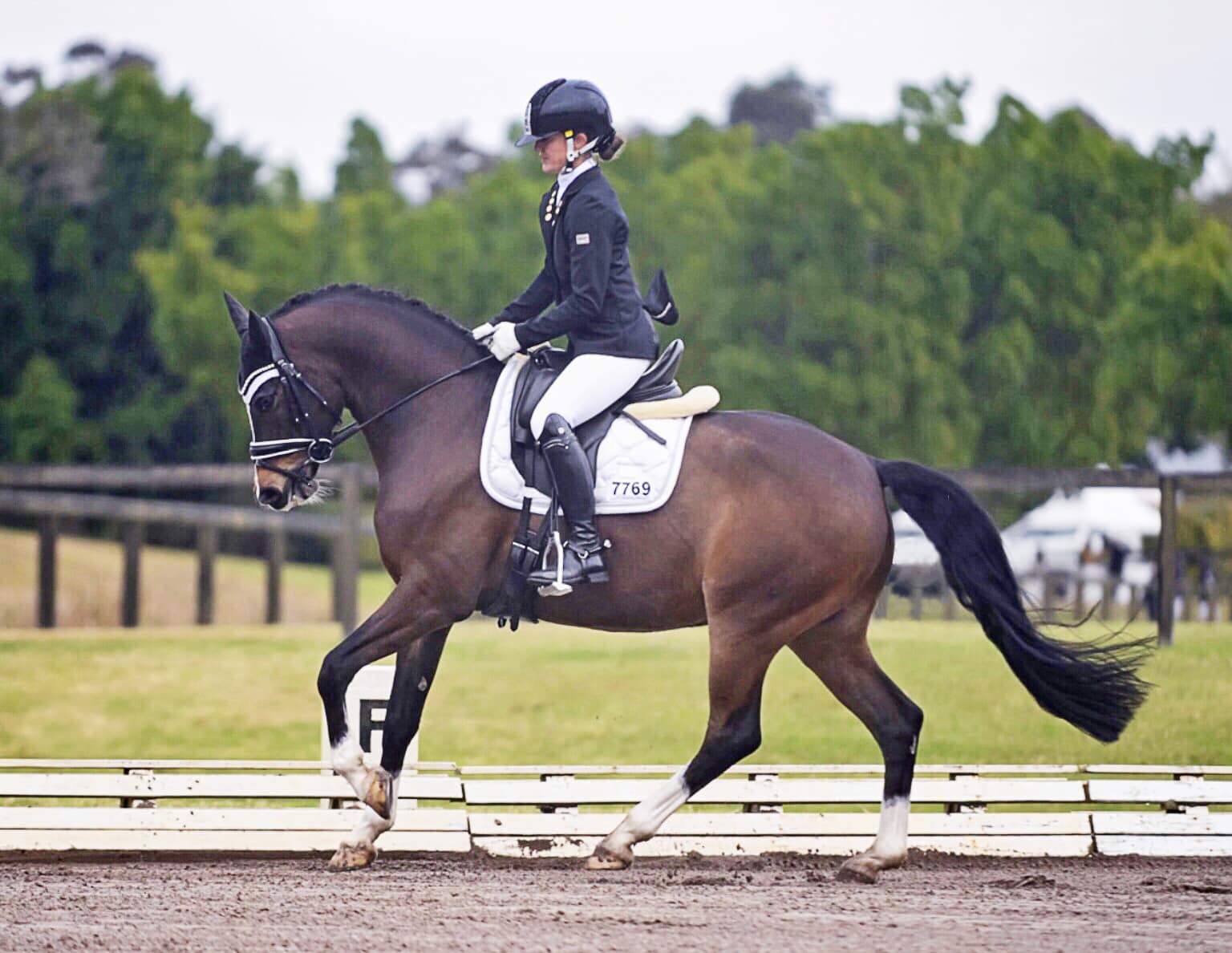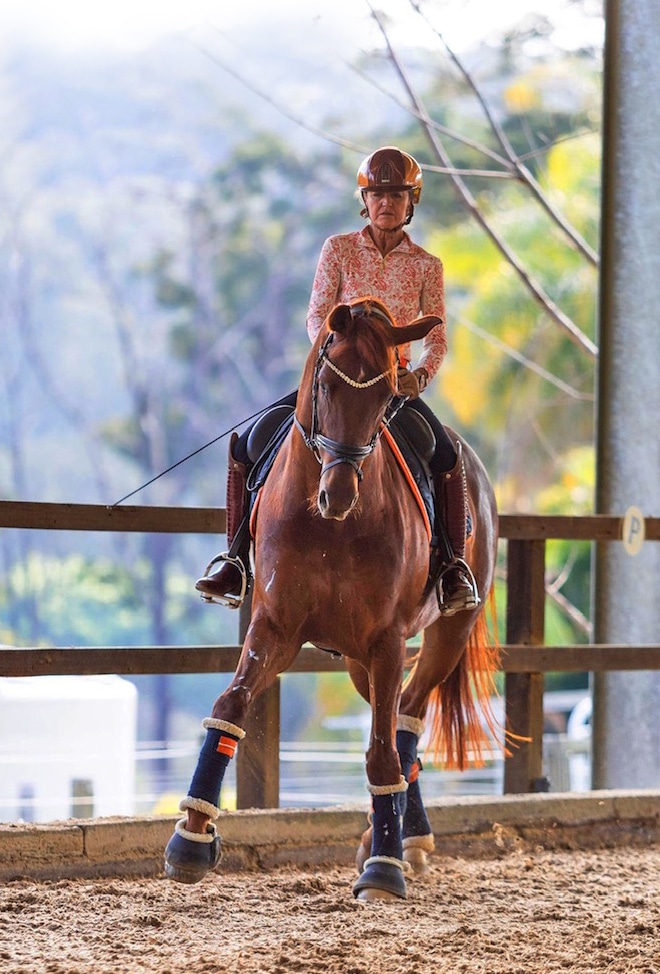
It’s elementary
Elementary – it’s the kindergarten of the tough stuff! In the second of her five-part series, NICOLE TOUGH looks at a horse’s training as they progress through the dressage grades.
The education system requires us to pass exams at the end of each school year to test our understanding of certain principles, to determine if we are either ready to graduate to the next year level or repeat. Likewise, the dressage levels are there to reflect the schooling of the horse, and the importance of each level cannot be underestimated.
Moving on from consolidating our basics, where our horses are going reliably and lightly on the bit in walk, trot and canter, elementary is where we start to systematically develop a more difficult balance point.
The step up to elementary is crucial, and a lot of riders are disheartened by a drop in their scores when they first dabble in the tests. I’ve even heard riders say they prefer to skip elementary. But it is hard for a reason. Elementary is where we begin to ask the horse to lower their haunches, engage a more rounded posture, and travel with greater uphill tendency, in other words, it’s the beginning of collection.
We should undertake this level with the goal of improving the horse’s strength through systematic exercises requiring a basic level of collection, which is a vital pre-condition for a higher stage of training. Without taking the time to increase their physical strength, they will eventually demonstrate an inability to perform the more difficult movements by becoming tense or resistant.
Collection requires progressive training, encouraging the hindlegs to step further towards the horse’s centre. Imagine a straight line from the girth to the ground. This is where we want to direct the hindlegs. The more successful we are, the more we relieve the forehand by redistributing the balance point and achieving greater collection.
We use the movements and exercises of the elementary level to systematically enable the horse to develop in a way that allows them to reach FEI confident in their mind and strong in their bodies. If we take the time to physically build the horse, they will mentally cope with the demands of the higher level tests. Below are some gymnastic exercises we can undertake at elementary level to achieve this goal:
Straightening/bending: Through the use of lateral movements such as shoulder-in, travers and renvers, straightening and bending exercises enable the horse to develop greater suppleness and engagement. In shoulder-in, for example, the inside hind leg should step more under, and the correct angle will push up the outside shoulder enabling more lift and expression.
Repeated transitions: Repeated transitions to and from trot and walk through four or five shortened steps, while ensuring we maintain the same energy regardless of the size of the steps. The purpose is to encourage the hindlegs to step nearer to the front through increased dorsal flexion of the spine. This idea is also the beginning of ‘short steps’.

Opening and closing the canter: This exercise can also strengthen the horse. The repetition of these transitions within the pace are crucial to developing the horse’s throughness in canter, which is key to further collection. Introduced on the circle, the rider invites the horse to make smaller steps with the seat aids, whilst maintaining and increasing energy with the leg aids. This is achieved through trial and error. Find out how much seat aid is required to make smaller steps, how much leg is needed to keep them active and how much rein is required to manage the frame – and always reward correct balancing moments and steps with less pressure and a pat.
Canter to walk transitions: These are of the highest gymnastic value if they are ridden with three to five smaller canter steps before the actual transition to walk. For the horse to do this, we invite them to make smaller more energetic steps. Should they evade the exercise by resisting, canter on and refresh the horse’s energy and improve the quality of their canter before trying again.
Counter canter: This exercise should be undertaken on gradually more difficult lines. The balancing and suppling effects of counter canter can help straighten a crooked horse and achieve greater engagement. Counter canter is also a necessary precursor for flying change training.
The halt and rein-back: Introduced at elementary level, this is key to understanding the half-halt. It also improves our connection and helps with readjusting balance thereby lightening the forehand.
Added to the above exercises, all the movements at elementary level are precursors for further training. The shoulder-in and travers are necessary for half-pass, the walk turn on the haunches for walk and canter pirouettes, the counter canter for flying changes, and the collection required for simple changes is a stepping stone for the canter half-pass, pirouettes and flying changes introduced in later training.
Collection involves a greater compression of the spine, which increases the ability for spring. If you compress a slinky, it has more spring. Ergo the more compression (carrying ability) we have, the more spring we get (pushing power). The ultimate carrying ability is required in piaffe, whilst the ultimate pushing power is required in passage.
These movements take many years to develop, with multiple layers of engagement, impulsion and collection all requiring a steady increase of the horse’s strength so that one day they may be able to perform the movements of the Grand Prix.
Without the necessary muscular strength, the rider will be forcing underdeveloped muscles and holding the horse in position. Correct systematic schooling, and working on the requirements of each dressage level are preconditions for all other training stages. Compromise is simply not possible.
For more information on lessons or a clinic with Nicole, visit Nicole Tough Dressage.


